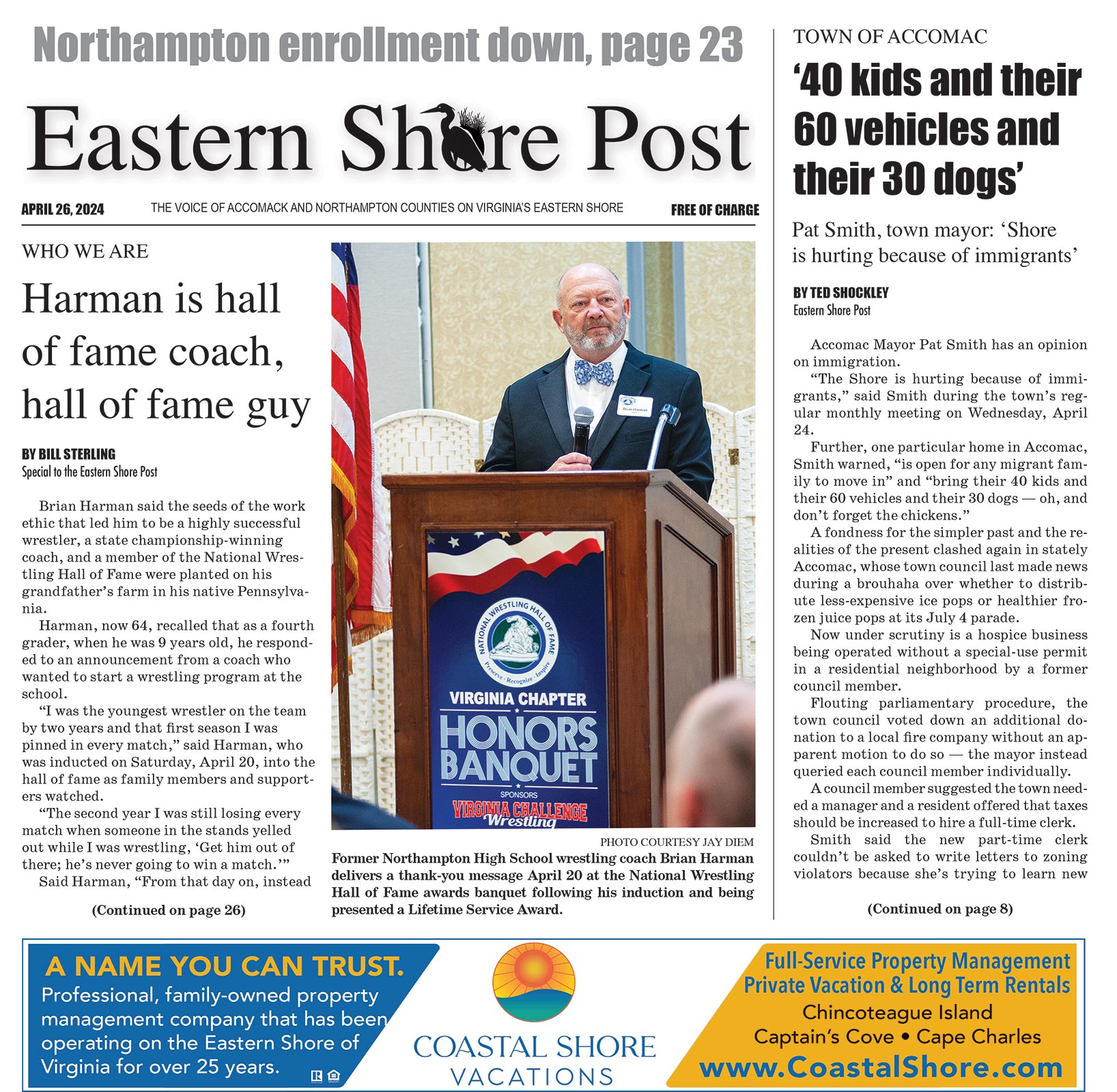By Stefanie Jackson – Northampton public school officials spoke with parents and community members Oct. 10 to make it easier to swallow the decision not to give all students free breakfast and lunch this year through a U.S. Department of Agriculture program called the Community Eligibility Provision (CEP).
“We want every child in this school system to be fed. We want every child in the system to have the best quality education they can get,” said school board Chairman William Oakley.
“It’s not that we don’t want the children to have what’s there, but we want to make a wise decision so we can keep it there after we give it to them,” he said.
The Northampton school board was questioned after parents discovered that neighboring school district Accomack was implementing the “free lunch for all” program this year but Northampton was not.
At the Oct. 10 school board meeting, Chief Financial Officer Brook Thomas and Director of Operations Chris Truckner provided a detailed explanation of the data that informed the decision to wait to implement the CEP program.
CEP allows all students to get free school breakfast and lunch based on the number of students who qualify for the program through direct certification, meaning they receive government assistance such as TANF (Temporary Assistance for Needy Families), SNAP (Supplemental Nutrition Assistance Program), or more recently, Medicaid.
Schools may participate if at least 40% of students are directly certified. As of 2019, 58.5% of Northampton students are directly certified.
But the CEP program reimburses the school district for the cost of meals at a different rate than the current program.
The federal government reimburses schools per meal; for example, $3.39 for a free lunch, $2.99 for a reduced-price lunch, and $0.39 for a full-price lunch. In the case of a reduced or full-price lunch, students pay a portion of the meal’s cost.
Since all students eat free under CEP, the program reimburses schools per student. The amount of the reimbursement is calculated by multiplying the percentage of directly certified students, 58.5%, by 1.6.
That means CEP would reimburse Northampton schools for 93.6% of the cost of the meals they serve.
That might sound good, but there’s a problem. School lunch programs are expected to be self-sustaining, like a business, Truckner said.
In the same way that meal prices cover the costs of food, equipment, cooks, and servers in a restaurant, the prices paid by students and government reimbursements for school meals should cover the costs of food, equipment, and kitchen and cafeteria staff.
Any costs not paid by CEP must be covered at the local level. If Northampton schools had started the program in 2019 with a 93.6% reimbursement rate, it would have created a budget shortfall of more than $25,000.
When Northampton supervisors heard that information at their Oct. 8 meeting, they responded to school officials.
“We’ve never turned down $25,000 for food. Not for the school board. Not in my history,” said Spencer Murray, chairman of the board of supervisors.
“I would hope that you would look at this very, very hard in the future,” he said.
However, if the “free lunch for all” program enticed more kids to eat school lunch, Northampton schools would likely have to spend about $28,000 to hire two additional part-time cafeteria workers as well, increasing the extra cost of the CEP program to more than $53,000.
Concerned citizen Roberta Kellam, of Franktown, acknowledged that the “magic number” of directly certified students needed to get 100% reimbursement for meals is 62.5%.
Both Northampton, at 58.5%, and Accomack, at 55.2%, fell short of the magic number, yet Accomack “didn’t wait, they just got it done,” Kellam said.
She noted that 63.2% of Northampton Middle School students are directly certified, meaning CEP would have been profitable for the school district if it had tried out the program at that one school this year.
But Superintendent Eddie Lawrence has stated on multiple occasions that if CEP is implemented, it will be at all four Northampton schools, in fairness to all students and parents.
Kellam also passed along information from the Virginia Department of Education that since 2014, not one school has dropped out of the CEP program.
This is likely because CEP has a built-in safety net: a school’s reimbursement rate is locked in for four years. If Northampton schools had entered the program this year with a 93.6% reimbursement rate, but next year fewer students were directly certified, the reimbursement rate would still be 93.6% for three more years.
Additionally, if within the four-year period more students become directly certified, the reimbursement rate would increase and the four-year period would reset.
But Northampton school officials were hesitant to “jump into” CEP in 2019 because it was the first time in years that it appeared the program could be feasible.
In 2019, the program would have created a shortfall of barely $25,000, but from 2015 to 2017, the annual shortfall would have been more than $170,000.
The projected shortfall began to drop in 2018, when Medicaid was added to the list of services through which students can be directly certified.
Northampton’s CEP reimbursement rate will be recalculated based on the number of directly certified students attending Northampton schools on April 1, 2020.
The deadline for the school board to decide if Northampton schools will implement “free lunch for all” next school year is June 30.



